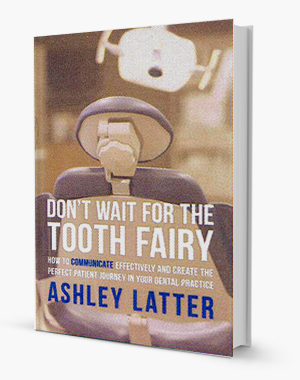Have you ever received a price objection from one of your patients? It will usually occur when the person presenting the treatment has failed to sell it well enough and not communicated the benefits or its true value.
This is my definition of an objection. It is a barrier to a sale, as a result of a failure to give it a more positive slant. This objection is in effect therefore, a request for more information.
A typical objection from a patient may be about the price of your treatment. They might say something like’ That’s a lot of money’ or ‘why does it cost that much?’ When you hear these statements, many dentists often feel that the patient does not want to proceed. As I have stated before it is a request for more information.
Without overcoming a price objection, a sale will not proceed. Often when a sales person receives them, they will crumble and become defensive.
It does seem that when it comes to money, dentists and their teams are distinctly uncomfortable. In some extreme cases there appears to be a reluctance to even quote the fees to their patients. Here is a simple tip which should assist you in the future:
If you’re discussing an extensive treatment plan for example, rather than saying the word “cost” use the word “investment” instead.
The definition of the word cost is: “an amount that has to be paid or spent to buy or obtain something.”
By contrast here’s the definition of the word investment:
Something which is worth buying, because it may be profitable or useful in the future.”
There is a significant difference in these two terms. One implies money leaving your pocket for good; the other suggests a return on it in the future. I would therefore encourage you to use the word “investment” rather than “cost” wherever possible.
From past experience, I know there is sometimes a reluctance to try this, as it feels unnatural to do so but I assure you that in time it will soon become second nature and feel like a much more appropriate word to use.
Now that you are using the word investment, it’s time to discuss what’s included in that price. Many won’t know exactly what’s involved and it is essential to make them aware what they’re actually getting for their money. Here is an example,
I hear that often when a patient is considering a crown, they have an assumption that it will simply come out of a nearby drawer and be slotted straight into their mouths. Consequently the £450 price tag will seem excessive. If you clarify the details of their “investment” they will have a greater understanding of how much work is actually involved. Let them know about the temporary crown and the bespoke nature of the one that is to be fitted. Explain how a skilled technician will be making it specifically for the unique shape of the patient’s mouth and the tooth it is set to replace. Now would also be a good time to mention any 12 month guarantees which back up the product.
Think of the difference this detail would make.
At this point let’s look at some useful words and phrases which will help you discuss price: manufactured, bespoke, hand crafted, skilled technicians – all will give the patient a feeling of how much work is being done specifically on their behalf.
You might even want to suggest that they can go to the technician’s laboratory if they so choose, where they can have a shade analysis, to exact colour match the crown with the other teeth. This is something I can highly recommend as from my conversations and working with technicians they enjoy this kind of interest in their work. Patients who’ve done this have found it very interesting too, as they very rarely see what goes on behind the scenes. It creates a new experience for them and of course they can see the significant value and work that goes into their treatment. It will also serve as another insight as to why the price is set much higher than a simple filling. Technicians who’ve attended my courses have then been able to apply their newly acquired knowledge when they meet patients and by doing so, have actually created fresh opportunities for the dentists, that they had missed.
It is absolutely imperative that you don’t take anything for granted when communicating treatments to patients and the fees that you charge. Most patients are unaware what goes on behind the scenes, even though you are presenting this information several times a day, for that particular patient it is the first time.
To conclude
- When discussing your fees with your patient and it maybe appropriate sometimes to use the word investment, rather than the word cost.
- When explaining to patients about fees, tell them what’s involved and what’s included. Patients don’t know.
- Remember even though you are communicating this information all the time, for the patient it will be the first time they have heard it.
There is more information on how to handle these objections in my book “Don’t Wait for the Tooth Fairy- How to Communicate Effectively & Create the Perfect Patient journey in your Dental Practice. In the book we look at the best ways in which to discuss the price of your treatment with patients. After you have read it you will feel much more comfortable talking money and with greater self-confidence, help more of your patients say YES more often. Please get your copy here for only £15

 Get our 3 minute lunch and learn videos to your inbox.
Get our 3 minute lunch and learn videos to your inbox.


ONE OF OUR TEAM
Two Reds Are Better Than One - Ashley Latter & Chris Barrow